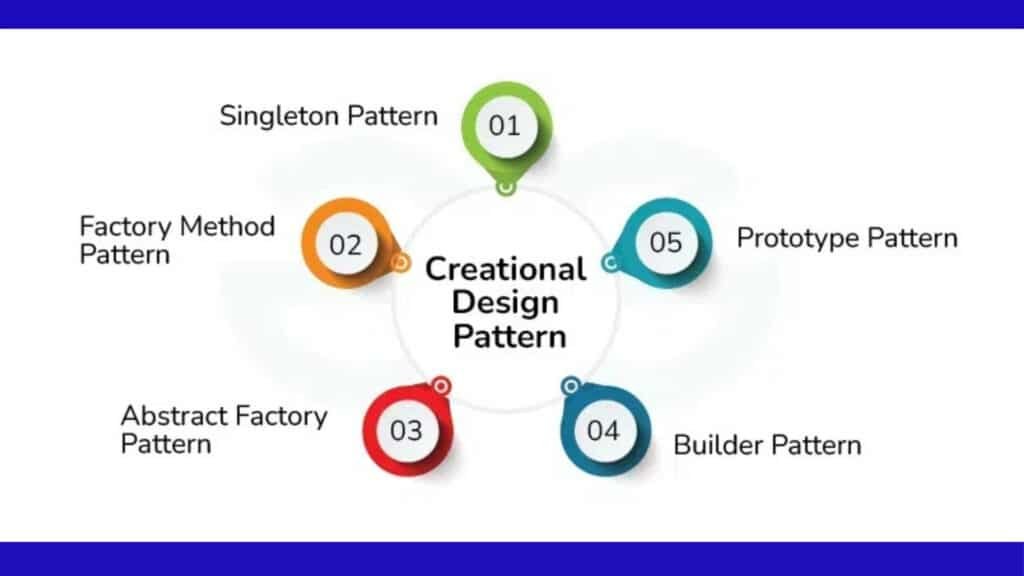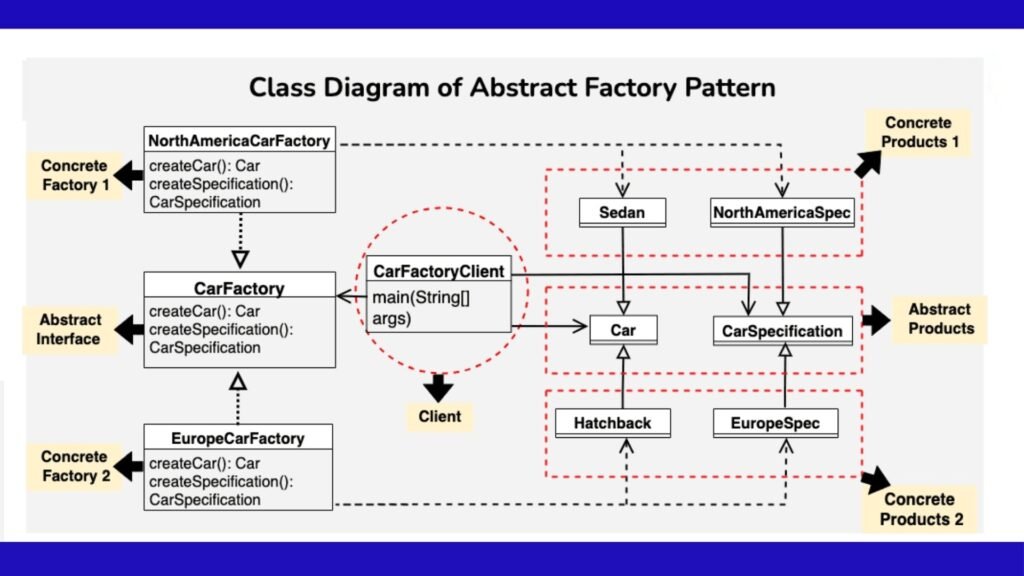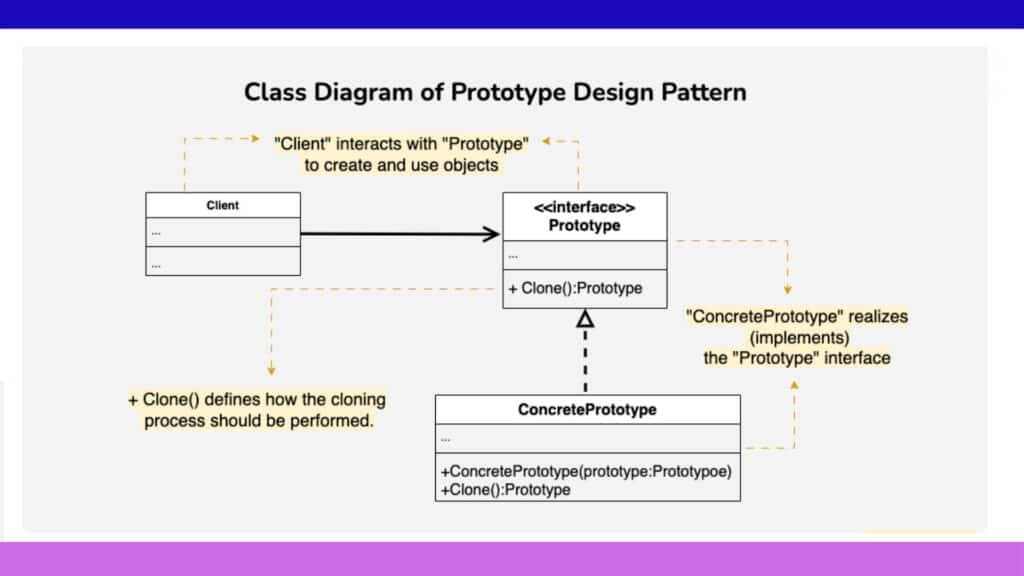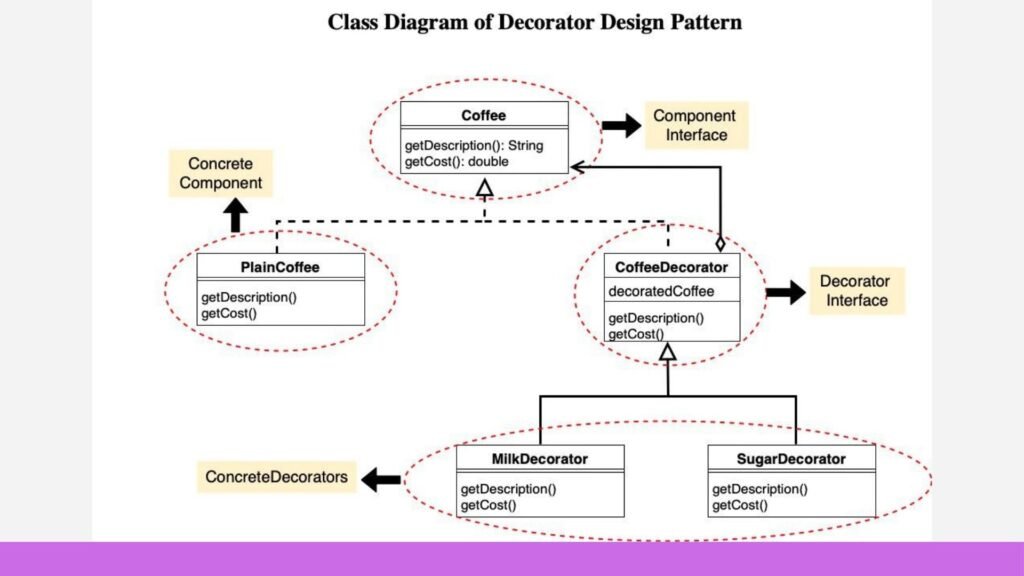In the dynamic world of software development, mastering object-oriented programming (OOP) design patterns is akin to learning a universal language understood by developers worldwide. These design patterns not only streamline coding processes but also enhance software maintainability and scalability. For programming students, software developers, and tech enthusiasts, gaining proficiency in these patterns can transform the way you approach problem-solving and code structuring. In this comprehensive guide, we’ll explore the essence of OOP design patterns using real-world analogies to make these concepts relatable and easy to understand.
Introduction to Object-Oriented Design Patterns A Beginner’s Guide
Before we dive into specific patterns, it’s crucial to understand what object-oriented design patterns are. At their core, design patterns are tried-and-true solutions to common problems encountered during software development. They provide a template for writing code that is organized, efficient, and reusable. For beginners, think of design patterns as a recipe book for your favorite dishes. Just as a recipe guides you through the cooking process with a list of ingredients and step-by-step instructions, design patterns guide developers in crafting solutions by outlining a generic structure that can be customized to fit specific needs.
Each design pattern falls into one of three categories—creational, structural, or behavioral—each serving a distinct purpose in software design. Creational patterns focus on object creation mechanisms, structural patterns deal with the composition of classes or objects, and behavioral patterns emphasize communication between objects.
Why OOP Design Patterns Matter Enhancing Code Structure and Reusability
Design patterns are invaluable because they promote code reuse and improve the overall architecture of software applications. By employing these patterns, developers can write code that is easier to understand, modify, and extend, which leads to reduced development time and costs. Imagine building a house using pre-fabricated modules instead of starting from scratch; design patterns offer similar convenience and efficiency in programming.
One of the key benefits of design patterns is that they encapsulate best practices in software design, thus preventing common pitfalls and errors. By adhering to these patterns, developers can ensure that their code adheres to industry standards, making it easier for others to read and collaborate on. Furthermore, design patterns facilitate better communication among team members, as they provide a shared vocabulary for discussing design patterns and concepts.
Understanding Creational Design Patterns Crafting Objects Efficiently
Creational design patterns focus on the optimal way to create objects in a program. They abstract the instantiation process, allowing developers to create objects without specifying the exact class of object that will be created. This level of abstraction is particularly useful when the precise type of object isn’t known until runtime.

For instance, consider a bakery that needs to produce different types of bread. Instead of manually baking each loaf, the bakery can use a machine that automatically selects the appropriate ingredients and baking time based on customer orders. Creational patterns function similarly by automating object creation, reducing redundancy, and enhancing code flexibility.
Singleton Pattern Ensuring a Single Instance with Real-World Examples
The Singleton Pattern ensures that a class has only one instance and provides a global point of access to it. This pattern is useful when only one instance of a class is needed to coordinate actions across the system. An analogy for this pattern is a government with a single official language. Just as a country maintains consistency by using one language for official communication, a program can maintain consistency by ensuring only one instance of a particular class exists.
Implementing the Singleton Pattern involves creating a private constructor, a static method to access the instance, and a static variable to hold the instance. This guarantees that the class cannot be instantiated more than once.
java
public class Singleton {
// Static variable to hold the single instance of the class
private static Singleton singleInstance = null;
// Private constructor to prevent instantiation from other classes
private Singleton() {
// Initialization code here
}
// Static method to provide global access to the single instance
public static Singleton getInstance() {
if (singleInstance == null) {
singleInstance = new Singleton();
}
return singleInstance;
}
// Example method to demonstrate Singleton functionality
public void showMessage() {
System.out.println(“Singleton Instance: Hello, World!”);
}
public static void main(String[] args) {
// Access the only instance of Singleton class
Singleton instance = Singleton.getInstance();
instance.showMessage();
}
}
This Java code example demonstrates the Singleton Pattern. The `Singleton` class has a private static variable `singleInstance` that holds its single instance. The constructor is private to prevent creating instances from outside the class. The static `getInstance()` method checks if an instance already exists and creates one if not, ensuring only one instance is ever created. This pattern is particularly useful when you need to coordinate operations across the system with a single instance.
Factory Method Pattern Creating Objects with Flexibility and Simplicity
The Factory Method Pattern provides an interface for creating objects in a superclass but allows subclasses to alter the type of objects that will be created. Imagine a car assembly line that can produce various car models without changing the base assembly process. The Factory Method Pattern allows for flexibility and simplicity by delegating the object creation process to subclasses, ensuring that each subclass produces the kind of object it requires.
The primary advantage of the Factory Method Pattern is that it promotes loose coupling by establishing a clear separation between the client code and the object creation code. This makes the system more adaptable to changes.
Abstract Factory Pattern Managing Complex Object Creation
When dealing with complex objects that require multiple components, the Abstract Factory Pattern comes into play. This pattern provides an interface for creating families of related or dependent objects without specifying their concrete classes. Imagine a furniture factory that can create different styles of chairs, tables, and sofas, each with unique parts but all following the same production process.

By using the Abstract Factory Pattern, developers can ensure that the related objects are compatible with each other, thereby maintaining consistency and integrity within the system. This pattern is ideal for applications where product families evolve independently.
java
// Abstract product interfaces for Chair, Table, and Sofa
interface Chair {
void create();
}
interface Table {
void create();
}
interface Sofa {
void create();
}
// Concrete product classes for Modern furniture style
class ModernChair implements Chair {
@Override
public void create() {
System.out.println(“Creating a modern chair”);
}
}
class ModernTable implements Table {
@Override
public void create() {
System.out.println(“Creating a modern table”);
}
}
class ModernSofa implements Sofa {
@Override
public void create() {
System.out.println(“Creating a modern sofa”);
}
}
// Concrete product classes for Victorian furniture style
class VictorianChair implements Chair {
@Override
public void create() {
System.out.println(“Creating a Victorian chair”);
}
}
class VictorianTable implements Table {
@Override
public void create() {
System.out.println(“Creating a Victorian table”);
}
}
class VictorianSofa implements Sofa {
@Override
public void create() {
System.out.println(“Creating a Victorian sofa”);
}
}
// Abstract Factory Interface
interface FurnitureFactory {
Chair createChair();
Table createTable();
Sofa createSofa();
}
// Concrete Factory for Modern furniture
class ModernFurnitureFactory implements FurnitureFactory {
@Override
public Chair createChair() {
return new ModernChair();
}
@Override
public Table createTable() {
return new ModernTable();
}
@Override
public Sofa createSofa() {
return new ModernSofa();
}
}
// Concrete Factory for Victorian furniture
class VictorianFurnitureFactory implements FurnitureFactory {
@Override
public Chair createChair() {
return new VictorianChair();
}
@Override
public Table createTable() {
return new VictorianTable();
}
@Override
public Sofa createSofa() {
return new VictorianSofa();
}
}
// Client code
public class FurnitureClient {
private Chair chair;
private Table table;
private Sofa sofa;
public FurnitureClient(FurnitureFactory factory) {
chair = factory.createChair();
table = factory.createTable();
sofa = factory.createSofa();
}
public void displayFurniture() {
chair.create();
table.create();
sofa.create();
}
public static void main(String[] args) {
FurnitureFactory modernFactory = new ModernFurnitureFactory();
FurnitureClient modernClient = new FurnitureClient(modernFactory);
modernClient.displayFurniture();
FurnitureFactory victorianFactory = new VictorianFurnitureFactory();
FurnitureClient victorianClient = new FurnitureClient(victorianFactory);
victorianClient.displayFurniture();
}
}
This example demonstrates the Abstract Factory Pattern in an object-oriented programming language like Java. Different styles of furniture (Modern and Victorian) are created using separate factories. Each factory is responsible for the creation of related objects (Chair, Table, Sofa) that pertain to its style. The client code uses these factories to instantiate and work with objects, ensuring that all products produced by a factory are compatible with each other.
Builder Pattern Constructing Complex Objects Step by Step
The Builder Pattern is particularly useful when constructing a complex object requires numerous steps or customization. It allows developers to construct a complex object incrementally by specifying the type and content of the object’s components. Consider a customizable PC building website, where users can select and assemble components to create their desired computer with different specifications.
Using the Builder Pattern, developers can separate the construction process from the representation, allowing the same construction process to create different representations. This pattern is especially handy in scenarios where a complex object needs to be constructed in various configurations.
Prototype Pattern Cloning Objects Like Copying a Blueprint
The Prototype Pattern involves creating new objects by copying existing ones, akin to cloning a blueprint. This pattern is beneficial when the cost of creating a new instance of an object is more expensive than copying an existing one. Equate this to app settings profiles, where users can save their custom configurations as templates that can be copied and used for new profiles.

The main advantage of the Prototype Pattern is the ability to create a new object from an existing instance without altering its structure. This pattern is especially useful in scenarios where object initialization is resource-intensive.
javascript
// Prototype Pattern example in JavaScript
// Prototype object
const carPrototype = {
clone() {
const clone = Object.create(this);
clone.name = this.name;
clone.model = this.model;
return clone;
},
init(name, model) {
this.name = name;
this.model = model;
return this;
},
display() {
console.log(`Car: ${this.name}, Model: ${this.model}`);
}
};
// Usage
const car1 = Object.create(carPrototype).init(‘Tesla’, ‘Model S’);
const car2 = car1.clone();
car2.name = ‘Ford’; // Changing name to differentiate between the original and clone
car1.display(); // Car: Tesla, Model: Model S
car2.display(); // Car: Ford, Model: Model S
In this example, we demonstrate the Prototype Pattern using JavaScript. We define a prototype object `carPrototype` with methods for cloning, initializing, and displaying car details. The `clone` method creates a new object with the same properties as the existing one, mimicking the classic prototype behavior. This allows for efficient creation of new objects by copying an existing instance.
Structural Design Patterns Building Flexible and Efficient Structures
Structural design patterns focus on how classes and objects are composed to form larger structures, promoting flexibility and efficiency. These patterns help ensure that if one part of a system changes, the entire structure does not need to be modified.
Consider the role of scaffolding in construction. Just as scaffolding supports a building during its construction phase without becoming part of the final structure, structural design patterns provide support and flexibility without becoming integral to the system’s core logic.
Adapter Pattern Making Incompatible Interfaces Work Together
The Adapter Pattern allows objects with incompatible interfaces to work together seamlessly. It acts as a bridge between two incompatible interfaces, enabling communication and interaction. Consider an international travel adapter that allows different plugs to connect to foreign electrical outlets. Similarly, the Adapter Pattern enables objects to collaborate, even if they were not designed to work together initially.
The Adapter Pattern is especially valuable when integrating legacy systems with new components or when adapting third-party interfaces to meet specific requirements.
Decorator Pattern Adding Functionality Without Modifying the Core
The Decorator Pattern allows developers to add new functionalities to an existing object dynamically without altering its structure. This pattern is akin to a customizable cake, where you can add layers, flavors, and decorations without changing the core base cake.

The Decorator Pattern promotes flexibility and reusability by allowing behaviors to be added to individual objects, rather than modifying the entire class. This ensures that any additional functionalities are modular and interchangeable.
javascript
// Decorator Pattern example in JavaScript
// Base component
class Coffee {
cost() {
return 5;
}
}
// Decorator
class MilkDecorator {
constructor(coffee) {
this.coffee = coffee;
}
cost() {
return this.coffee.cost() + 1; // Adding cost of milk
}
}
// Another Decorator
class SugarDecorator {
constructor(coffee) {
this.coffee = coffee;
}
cost() {
return this.coffee.cost() + 0.5; // Adding cost of sugar
}
}
// Usage
let coffee = new Coffee();
console.log(`Cost of plain coffee: $${coffee.cost()}`);
coffee = new MilkDecorator(coffee);
console.log(`Cost of coffee with milk: $${coffee.cost()}`);
coffee = new SugarDecorator(coffee);
console.log(`Cost of coffee with milk and sugar: $${coffee.cost()}`);
In this example, we demonstrate the Decorator Pattern in JavaScript by enhancing a basic `Coffee` object with additional features using decorators. Decorators `MilkDecorator` and `SugarDecorator` are used to add milk and sugar respectively, each modifying the cost of the coffee dynamically without altering the base `Coffee` class. This patternAn error occurred during generation. Please try again or contact support if it continues.
Facade Pattern Simplifying Complex Systems with a Unified Interface
The Facade Pattern provides a simplified interface to a complex subsystem, making it easier for clients to interact with the system without understanding its intricacies. Think of a smartphone interface that simplifies access to complex features, hiding the intricacies of the system’s operations.
The primary benefit of the Facade Pattern is that it reduces dependencies between the client and the subsystem, promoting loose coupling and simplifying maintenance.
Composite Pattern Handling Objects as Trees and Hierarchies
The Composite Pattern allows developers to treat individual objects and compositions of objects uniformly. It’s particularly useful for handling tree structures, where both leaves and composites are treated as nodes. Consider a file system where folders and files are treated as the same object, allowing nested folders and files to be handled uniformly.
This pattern simplifies client code by allowing objects to be treated as part of a hierarchy, enabling recursive operations on composite structures.
Bridge Pattern Decoupling Abstraction from Implementation
The Bridge Pattern separates the abstraction of a system from its implementation, allowing them to vary independently. This is akin to a remote control that can operate different electronic devices, acting as a bridge between the device and the user.
The Bridge Pattern promotes flexibility by enabling changes in both the abstraction and implementation without affecting each other. This is particularly useful in scenarios where a system may require multiple implementations.
javascript
// Bridge Pattern example in JavaScript
// Abstraction
class RemoteControl {
constructor(device) {
this.device = device;
}
togglePower() {
if (this.device.isEnabled()) {
this.device.disable();
} else {
this.device.enable();
}
}
volumeUp() {
this.device.setVolume(this.device.getVolume() + 10);
}
volumeDown() {
this.device.setVolume(this.device.getVolume() – 10);
}
}
// Implementation interface
class Device {
isEnabled() {}
enable() {}
disable() {}
getVolume() {}
setVolume(volume) {}
}
// Concrete Implementation
class Television extends Device {
constructor() {
super();
this.enabled = false;
this.volume = 20;
}
isEnabled() {
return this.enabled;
}
enable() {
this.enabled = true;
console.log(‘Television is now ON’);
}
disable() {
this.enabled = false;
console.log(‘Television is now OFF’);
}
getVolume() {
return this.volume;
}
setVolume(volume) {
this.volume = Math.min(Math.max(volume, 0), 100);
console.log(`Television volume set to ${this.volume}`);
}
}
// Usage
const tv = new Television();
const remote = new RemoteControl(tv);
remote.togglePower();
remote.volumeUp();
remote.volumeDown();
remote.togglePower();
In this code example, we demonstrate the Bridge Pattern in JavaScript by decoupling the `RemoteControl` abstraction from the `Television` implementation. The `Device` interface facilitates various implementations that can be controlled by the `RemoteControl`, enabling flexibility in both controlling different devices and altering device implementations without affecting each other. This pattern supports seamless integration and interchangeability of the abstraction and implementation layers.
Behavioral Design Patterns Managing Communication and Workflow
Behavioral design patterns focus on how objects communicate and interact with each other. These patterns emphasize how responsibilities are distributed among objects and promote efficient communication.
Think of a complex orchestra, where each musician plays their part in harmony with others. Behavioral patterns ensure that each component of a system operates in harmony, efficiently managing interactions and workflows.
Observer Pattern Keeping Objects in Sync Like a Notification System
The Observer Pattern is a behavioral pattern that allows an object to notify other objects when its state changes, keeping them in sync. This is similar to a notification system where changes in one part of a system automatically trigger updates in other parts.
The Observer Pattern is ideal for applications where changes in one object need to be reflected in others, such as in user interfaces or event-driven systems.
Command Pattern Encapsulating Requests as Objects for Flexibility
The Command Pattern encapsulates requests as objects, allowing them to be parameterized, queued, or logged. This pattern is akin to a remote control, where each button press is a command that triggers a specific action.
The Command Pattern promotes flexibility by allowing requests to be managed as objects, enabling undo/redo operations and promoting loose coupling between objects.
Strategy Pattern Choosing Behaviors Dynamically
The Strategy Pattern allows a client to choose an algorithm from a family of algorithms at runtime. This pattern is like a chess player choosing a strategy based on the current state of the game.
The Strategy Pattern enables an application to choose from a set of algorithms, promoting flexibility and adaptability by allowing behaviors to be selected dynamically.
Template Method Pattern Defining Algorithms with Variability
The Template Method Pattern defines the skeleton of an algorithm, allowing subclasses to implement specific steps. This pattern is like a cooking template, where certain steps are predefined, but specific ingredients and techniques can vary.
The Template Method Pattern promotes code reuse by defining a generic algorithm structure while allowing subclasses to customize specific steps.
The Power of OOP Design Patterns Real-World Analogies and Best Practices
In conclusion, mastering object-oriented design patterns is a crucial skill for programmers, software developers, and tech enthusiasts. By understanding these patterns and incorporating them into your projects, you can enhance code efficiency, reusability, and maintainability. Just as a well-crafted blueprint guides builders in constructing sturdy structures, design patterns provide developers with a roadmap for crafting efficient, adaptable, and scalable software solutions.
As you continue to explore and apply these patterns, remember that practice and experimentation are key to truly mastering them. Whether you’re building software from scratch or improving an existing system, design patterns are powerful tools that can elevate your programming skills to new heights. For further learning and exploration, consider seeking out additional resources, tutorials, and coding challenges to deepen your understanding and proficiency in OOP design patterns.
Challenges in Pattern Implementation
Despite the advantages of using design patterns, implementing them can present several challenges. One significant issue is the temptation to overuse patterns, leading to overly complex or convoluted designs. This can result in code that is difficult to maintain or understand, as developers might apply patterns without fully considering whether they are necessary for the specific problem at hand. Additionally, each pattern comes with its own set of trade-offs and selecting the wrong pattern for a particular scenario can complicate matters further rather than simplifying them.
Patterns also require a deep understanding of both the problem domain and the interaction between different components, which can be daunting for less experienced developers. Moreover, integrating patterns into existing legacy codebases often necessitates significant refactoring, posing risks to system stability. Therefore, careful evaluation and selection of design patterns, coupled with a solid understanding of their purposes and impacts, are crucial to overcoming these challenges effectively.
Conclusion
Design patterns serve as a powerful toolkit for software developers seeking to create robust, efficient, and maintainable applications. By leveraging these time-tested solutions, developers can effectively address common software design challenges. However, it’s important to remember that design patterns are not one-size-fits-all solutions, and their application requires discernment and an understanding of the specific problem contexts they aim to address. Over-reliance on patterns or inappropriate application can lead to unnecessary complexity. Therefore, developers should strive to balance the use of design patterns with simplicity and clarity in their code. Ultimately, the thoughtful application of design patterns allows for the construction of highly adaptable and scalable software, enhancing both the development process and the quality of the end product.
